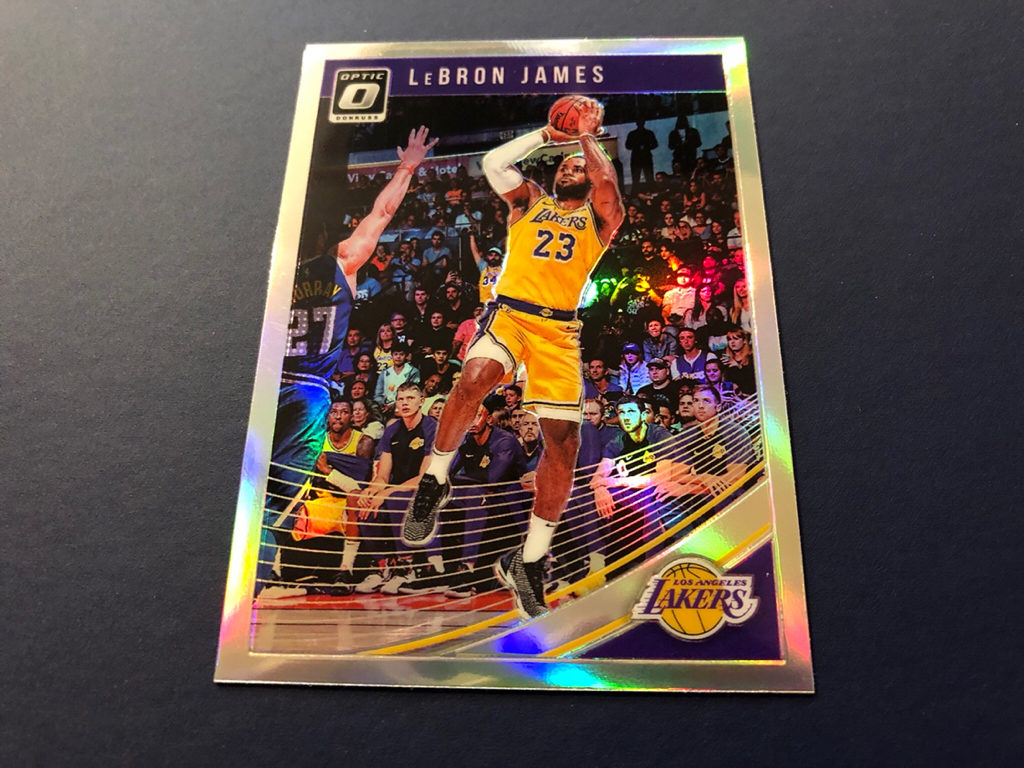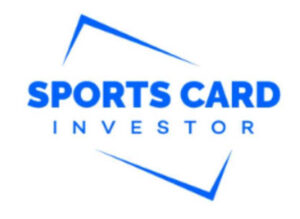
Advanced Techniques to Identify Undervalued Card Sets and Find Bigger Upside
This guest post came through our Article Submission Program. Thoughts and opinions are those of the author.
The Epiphany
As I have progressed in the hobby, I’ve worked to learn from my mistakes (see my article about using Cross-Sport references to invest here) and to become as fluent as possible in the most popular card set for the players I’m interested in. But now, I sit here mid-season Football, and early season Basketball, wondering what the next moves are in terms of investing in more cards for those respective sports.
It wasn’t until just yesterday when I had an epiphany that would add an entirely new dimension to my investing strategy that I could deploy at this point in those seasons: I will try to advance my skills by learning how to identify undervalued card sets for the players I’ve already deemed my focus, to capture upside outside of my core investments.
While I’ve felt good about staying disciplined and investing in what I know (mostly Prizm), I began to notice that Donruss Optic Holo basketball cards, especially the silver variants, have been exploding in value. I kept hearing the success stories of flips for these cards and I’m shocked because I originally thought there was little value in the Donruss Optic Holos and largely ignored them.
Then it hit me: apart from predicting which players values will increase, you can also start to predict which specific cards and card sets will take off. To me, this is an advanced version of collecting and investing. The ability to see certain trends and patterns with particular card sets using an informed view of eye appeal, population data, etc. and be confident about betting on it, is a tough thing to do, but the payoffs are high.
Remember, I am not a financial advisor – invest at your own risk and within your own budget.
The Trends That Caught My Eye
The very first trend that clued me into looking both at non-rookies and the less popular sets of cards with a more critical eye, was the 2018-19 Lebron James Donruss Optic Silver card. Back in August, these cards, raw, were selling for $31, as seen below.
Even at $31, why would someone want a non-rookie, non-Prizm (in Lebron’s case, Topps) card? A few things – this was the first card in Lebron’s Laker jersey. It also has the eye appeal of an action shot and the silver refactor. Another thing I began to notice is the lack of PSA 10s available for sale. After listening to a few podcasts, there are opinions that this specific card is hard to grade a 10. Let’s look at the population data below:
There are 42 PSA 9s and 42 PSA 10s. A 50/50 split. Maybe this percentage will skew toward 10s as more are submitted, but fresh out of pack cards typically would not have a 50/50 split like this, indicating that it is indeed a hard 10 to get.
Given that information, the population data, the first Laker jersey card, and the refactor that is so popular among investors and collectors, you would expect this card as a PSA 10 to sell for a decent amount. Well, how does $780 sound?
Even though this is Lebron James and he is generally an anomaly, there is a lot to be learned and applied from the value of a non-rookie card from a set that was not initially valued very highly. Population data, difficulty of grade, eye appeal, the Lakers jersey, etc. all played a factor in the value of this card and are data points we can leverage to identify undervalued sets. But what about using other players not named Lebron to help us make these decisions?
Let’s look at Trae Young, who has been a major point-scorer for the Hawks so far this season and is getting a lot of attention. If you’re like me, you’ve been buying his Prizm Silvers. The Prizm Silver is “the” card for this rookie class, at least that’s what the hype will tell you, but the numbers do back it up. The most recent Silver PSA 10 sale was $430, which is more than double what they were going for over the summer (around $200).
This is great growth for that specific card, but I began to notice his Optic Silver increasing in value dramatically – a card that I had ignored because I thought it wasn’t popular on the sheer fact that it wasn’t his Silver Prizm. Let’s look at some sales examples.
On October 3rd, a Trae Young Optic Holo raw sold for $24.95. They were progressively increasing in value at this time, but generally this is a card I, and I think other investors, weren’t really thinking about.
Flash forward to October 24th, and these are now selling for $100. 3 weeks, exceptional performance and a tripling of value. Pretty good return, right?
You might argue that this increase is due to the fact that Trae has been dominating in his first few games. So let’s look at the values in a relatively similar time period for the Silver Prizm raw. On October 3rd, we saw them selling for around $150:
Just three weeks later, we see them going for $180, a $30 increase:
What does this tell us? First, I think the data shows that the Optic Silver Holo increase wasn’t all Trae’s performance; some of this was the market catching up to a card with good eye appeal and the same refactor component like the most popular silver prizm.
Now, let’s look at the PSA population data of the holo:
There are three PSA 8, twenty-six PSA 9 and twenty-two PSA 10 cards currently. That’s even worse than the 50% split with Lebron’s Optic Holo. It’s not a lot of data, but it does not seem that this is an easy 10 for this particular card. Let’s look below at the Silver Prizm data for comparison.
First, we notice that there are significantly more cards graded for the Prizm than Optic – 1,532. This is not likely due to a shorter print, but due to people not submitting these cards (my guess is that not many people initially realized the value) and PSA taking longer than expected for those who did submit cards. Prizm came out before the Optic, so we’d expect the Optic numbers to increase.
Regardless, you can see that about 72% (1,103/1,532) of submitted Prizm Silver cards graded a 10, versus the less than 50% for the holo. It seems every time I pause writing this article and check Trae Young Prizm Silver values, they’ve gone up in value, but if we are now advancing how we invest, a PSA 10 Donruss Optic Holo looks like an incredibly smart investment. However, I don’t even see any currently listed! The advantage may change given that there are probably 1,000 cards (this is a total guess, I don’t know the print run) in process for submission, but these look tough to grade. Full disclosure: I do not own any of these Donruss Optic holos, at least for now.
Now that we’ve seen two examples of a non-rookie and a rookie, let’s take a look at another non-rookie: the 2018-19 Revolutions Giannis Galactic Parallel.
Giannis is the NBA’s reigning MVP, and a player to keep an eye on in general, but how about a 2018-19 non-rookie card increasing by $190 over the course of 7 months?
Okay, maybe not the type of return we are used to, but how is a non-rookie Giannis going for $560? Part of this is the scarcity of the card, but part of it is the eye appeal. Again, these are both mental models we can apply to predicting which cards may increase in value. To me, this is a unique card. I never even heard of it myself, but this card raw fetches more than a rookie Giannis Prizm Base PSA 10! It’s an attractive looking card, and has a very short print run.
How To Use The Lessons Provided in These Examples to Identify Undervalued Card Sets
I provided just three examples of two non-rookies and a rookie trend that took me by surprise and can help inform savvier investing, but there are many, many more examples out there. Again, I think it’s actually easier to identify players in which to invest, and harder to find undervalued cards of that player outside of the core popular sets.
Finding cards outside of the popular sets is probably the toughest part, especially as a new investor – if you’re looking at eBay completed sales for Donruss Optic Silver Holos and seeing none sell for more than $20, you might ignore it and focus on the Prizm, because the data isn’t very encouraging. But, if you step back for a second, you might see what everyone else doesn’t and find yourself in a much larger upside opportunity.
Use The Eye Appeal To Help You Invest
I think we can all agree a refactor element to a card makes it more valuable. In any set – Select, Spectra, Optic, etc., refactors sell for more. On top of that, an action shot in the card can make a difference – look at that Lebron Optic – we can all agree that is a pretty sweet pose in the card. It’s why some people value his Topps Chrome rookie so much, because it’s him taking a shot, something that is more fun to look at. If you see a card and you think “wow, that’s an awesome picture for that player” it might clue you in to a card that has potential value. It’s also why on-card autos are more popular than stickers – the cards just look better when the autographs are on-card.
Apart from this, parallel colors that match a players jersey color or team color can be more attractive to an investor or collector. For example, three of my favorite cards to look at are my Sam Darnold Green Prizm PSA 10, Carson Wentz Green Prizm PSA 10 and a Josh Rosen Ruby Red PSA 10.
In fact, I’ll be adding a fourth to that list. I just purchased the below tri-color Select Rookie of Trae Young – who wouldn’t love to have a PSA 10 refactor of Trae with a background of the Hawks colors to match his jersey?
Use Population Data and Other Trends
PSA and Beckett both have population data available for cards. While it’s helpful to look on Instagram, chat on Discord and listen to Podcasts to get informed opinions of cards and keep a pulse on what’s popular, scarcity + eye appeal will always drive value.
PSA Population: https://www.psacard.com/pop/
Beckett Population Report: https://www.beckett.com/grading/popreport.asp
Take an extra look at the percentage of cards that grade 10 in different sets. If you identified a player like Trae Young before the season, imagine having a PSA 10 in a set that’s tough to get a PSA 10. That scarcity of a popular player instantly creates more value. Serial numbered cards are also helpful because you immediately know the total population and it might be advantageous to grab a lesser known set card parallel numbered to 25, and as a player rises in popularity, the scarcity alone will be a driver of value.
There’s Money to Be Made Outside of Silver Prizms
I use the Silver Prizm anecdotally, but it’s all people seem to talk about when they first enter the hobby whether it is to collect or invest. I was even so locked into the Prizm Silver that I missed other opportunities and have barely scratched the surface of what else is out there in different sets.
That’s not to say you can’t be successful by focusing on one set, and the Prizm set is a great one, but if you are looking to expand your opportunity, these tips can help you do just that.
Final Thoughts – Put Yourself In a Collector’s Shoes
Ultimately, my goal is to have fun in this hobby, make a little money and buy some cool cards. If you are 100% about the money, it’s likely you won’t be successful. Why? Because if you don’t inherently understand the value of the product you are selling, it will be challenging to make good decisions about what product to buy in the first place and how to market afterwards. The same goes for any business. If you really feel what it’s like to be a collector, you’ll know why having a PSA 10 of the first Lebron in a Laker jersey is important. You’ll know why a Green Prizm PSA 10 of Carson Wentz is the prominent card in my collection. You’ll be able to understand these trends better and recognize things earlier than other people in the game.
Happy Hunting!
What factors do you look for to find undervalued cards? What sets do you think will jump in value next? Let us know in the Comments below.
Ready to take your sports card investing to the next level? Join my Membership Program now for card picks, analytics, premium community access and much more!






